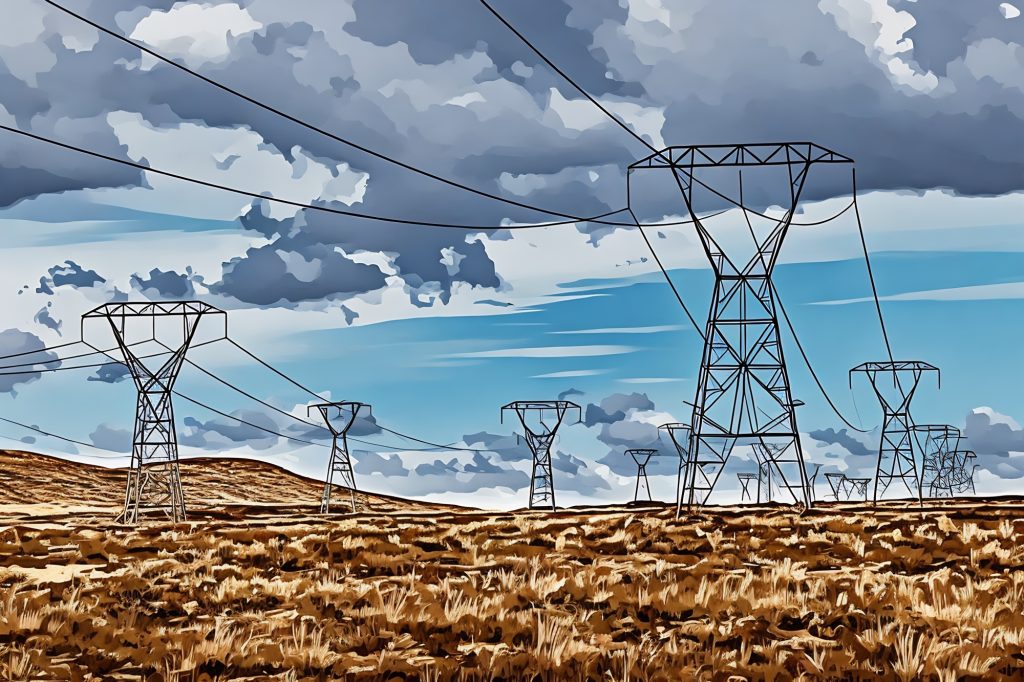The U.S. electric grid comprises three large regional networks (Eastern Interconnection, Western Interconnection, and Texas (ERCOT)), each with limited capability to transfer power across its boundaries. Interregional transmission development in North America has significantly lagged behind other global regions, contributing to higher costs and increased risks of power outages during extreme weather events. In response to this growing vulnerability, policymakers proposed the Building Integrated Grids With Inter-Regional Energy Supply (BIG WIRES) Act, designed to enhance interregional electricity transfer capacities and overall grid reliability significantly. This Energy Brief reviews the evolution of the BIG WIRES Act, its primary objectives and expected impacts, and examines the perspectives of its advocates and critics within the electric power industry.
Evolution of the BIG WIRES Act
The origins of the BIG WIRES Act stem from an increasing awareness of weaknesses in America’s segmented transmission infrastructure. Several grid crises, including the 2019 heat wave and the severe 2021 Texas freeze, emphasized the critical need for interregional grid enhancements. Recognizing these vulnerabilities, in mid-2023, a coalition of eight states petitioned the U.S. Department of Energy to support proactive interregional transmission planning. Subsequently, Senator John Hickenlooper (D-CO) and Representative Scott Peters (D-CA) formally introduced the BIG WIRES Act in September 2023.
Initially part of broader legislative negotiations, the Act faced partisan disagreements and was separated into standalone legislation. Despite initial resistance, the bill gained bipartisan interest, particularly due to its perceived importance in strengthening the nation’s grid. As of early 2025, the BIG WIRES Act remains under legislative consideration, highlighting the urgency and the complexities of reaching a political consensus.
Objectives and Provisions of the BIG WIRES Act
At its core, the BIG WIRES Act mandates that each transmission planning region defined by the Federal Energy Regulatory Commission (FERC) develop infrastructure capable of transferring at least 30% of its peak load to neighboring regions. This ambitious goal aims to create significant power-sharing capabilities, enhancing grid stability and flexibility. The Act excludes the Texas ERCOT grid unless voluntarily participating, maintaining the historical independence of Texas’s electric infrastructure.
Notably, the Act does not specify particular transmission technologies or energy sources, thus allowing regions significant flexibility in achieving compliance. Regions may utilize new high-voltage transmission lines, upgrades to existing lines, advanced grid technologies, energy storage solutions, and demand-response strategies to meet the mandated transfer capacity. The Act also includes no direct federal funding, with costs managed through typical industry channels, such as utility rates and private investments.
Implications for Transmission Infrastructure and Reliability
The BIG WIRES Act could substantially expand U.S. interregional transmission capabilities if enacted. Studies suggest national transfer capacity would more than double by 2035, particularly benefiting regions like the Southeast, Midwest, and Plains that currently have minimal interregional links. Achieving these targets would likely necessitate both upgrades of existing transmission corridors and the construction of significant new high-voltage direct current (HVDC) lines.
The anticipated benefits for grid reliability are considerable. Enhanced transfer capacities could mitigate blackout risks during severe weather events, allowing regions facing supply shortages to import electricity from areas with excess generation. Economic benefits are also expected, as regions could efficiently utilize low-cost renewable energy resources from distant locations, thus reducing overall generation costs and improving price stability.
Stakeholder Perspectives: Support and Criticism
The BIG WIRES Act has garnered broad support from diverse stakeholders, including renewable energy groups, environmental advocates, industrial electricity consumers, and technology companies. Supporters emphasize reliability improvements, cost savings, and enhanced capability to integrate renewable energy resources, aiding climate objectives. Former FERC officials and consumer groups highlight the pragmatic and flexible nature of the bill, praising its focus on results rather than prescriptive measures.
Conversely, the Act faces substantial criticism, primarily focused on implementation challenges. Critics point to difficulties in siting new transmission lines, potential conflicts with state and local authorities, and uncertainties regarding cost allocation among beneficiaries. Certain legislators express skepticism about the feasibility of achieving the Act’s ambitious transmission targets without accompanying reforms to streamline permitting processes. These critics worry about federal overreach and unintended financial burdens on specific regions.
Moreover, the BIG WIRES Act intersects with broader debates on energy permitting reforms. Many Republican lawmakers have indicated conditional support, advocating for concurrent regulatory changes favorable to fossil fuel infrastructure. Without such bipartisan compromises, the Act’s future remains uncertain, though its introduction has significantly influenced national grid policy discussions.
Conclusion
The BIG WIRES Act represents a significant legislative effort to fundamentally transform America’s transmission infrastructure into a more interconnected and resilient grid. While support among stakeholders highlights its potential benefits in reliability, economic efficiency, and renewable integration, the path forward is complicated by political, logistical, and economic challenges. Regardless of immediate legislative outcomes, the BIG WIRES Act has undeniably elevated interregional transmission as a critical priority for the U.S. electric power sector, shaping future investment and policy decisions to modernize the grid for the 21st century.



